Sikkim, nestled in the eastern Himalayas, is often praised for its postcard-perfect views, spiritual monasteries, and popular hill stations like Gangtok and Pelling. But beyond the usual tourist trail lies a quieter, more intimate side of this Himalayan wonder—a side untouched by crowds, where ancient cultures thrive and nature whispers in every breeze.
If you’re someone who craves authenticity, peace, and a bit of adventure, it’s time to leave the mainstream and explore the hidden gems of Sikkim. From misty valleys preserved by indigenous tribes to remote lakes, cliffside trails, and floral sanctuaries—these offbeat destinations offer more than just beauty. They promise meaningful experiences.
In this guide, we take you through less-explored villages, ancient trails, and secret spots that deserve a place on your next travel itinerary. Whether you’re a solo traveler, an eco-tourist, or a seeker of solitude, these places will show you the real, raw Sikkim—far from the crowds but close to the soul.
1. Dzongu Valley – The Forbidden Lepcha Land
Tucked away in the lush folds of North Sikkim, Dzongu Valley is a culturally protected area reserved for the indigenous Lepcha community, believed to be the original inhabitants of Sikkim. Unlike commercial tourist hubs, Dzongu is quiet, sacred, and off-limits to mass tourism, making it one of the most untouched travel experiences in the region.
Surrounded by the Kanchenjunga Biosphere Reserve, this valley is rich in biodiversity—home to orchids, ferns, medicinal plants, and wild rivers. Here, time slows down. You’ll cross wooden suspension bridges draped in prayer flags, bathe in natural hot springs, and stay in eco-homestays run by local families in villages like Tingvong and Lingthem.
The cultural experience is just as immersive—participate in traditional Lepcha rituals, taste organic millet-based cuisine, and hike to hidden monasteries where monks chant in candlelit halls. Dzongu isn’t for the average tourist—it’s for the mindful traveler seeking peace, authenticity, and reconnection with nature.
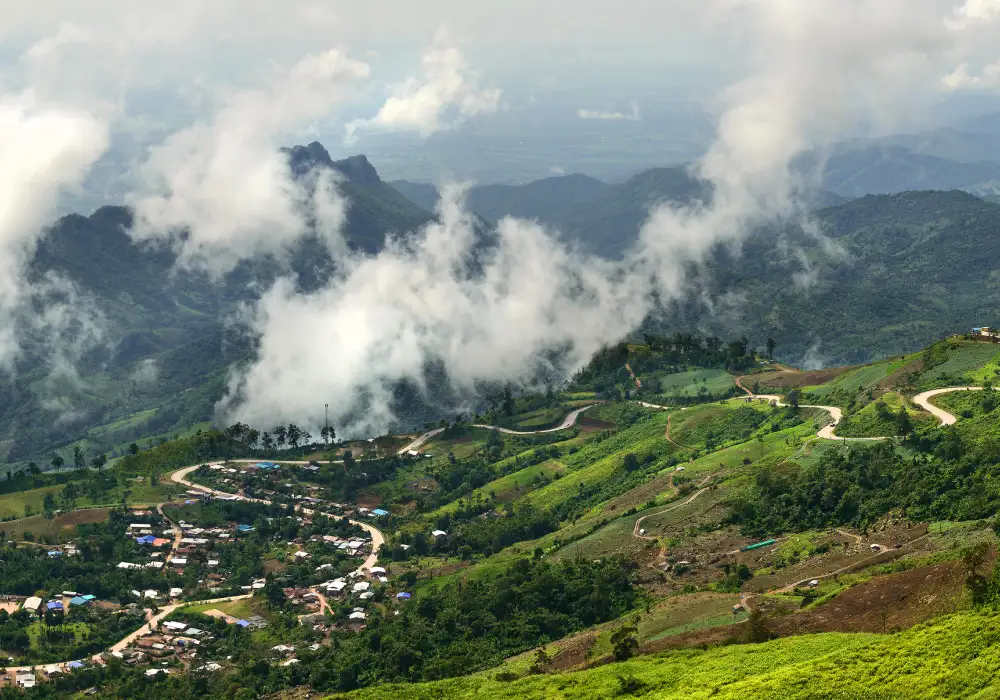
Permit Required: Indian citizens need an Inner Line Permit (ILP) to enter Dzongu. Foreigners are generally not permitted due to its protected status.
Whether you’re looking to unplug or dive into Sikkim’s spiritual roots, Dzongu offers the rare kind of solitude that stays with you long after the journey ends.
2. Yuksom – The First Capital of Sikkim
Often overshadowed by more commercial towns, Yuksom is a peaceful heritage village located in West Sikkim, known for being the first capital of the Kingdom of Sikkim. Steeped in history, spirituality, and natural beauty, it’s a must-visit for travelers who appreciate both culture and calm.
Yuksom was the site where the first Chogyal (king) of Sikkim was crowned in 1642. Today, you can still visit the Norbugang Coronation Throne, a sacred site nestled under giant prayer flags and ancient trees. It’s quiet, reverent, and carries a strong spiritual energy.
Yuksom is also the starting point of the Dzongri–Goechala trek, one of Sikkim’s most celebrated high-altitude trails leading to spectacular views of Mt. Kanchenjunga. But even if you don’t plan to trek far, short hikes around Yuksom offer thick forests, ancient monasteries like Dubdi Monastery (the oldest in Sikkim), and crystal-clear lakes like Kathok Lake, believed to be sacred.
This sleepy village is perfect for slow travel—sip butter tea at a family-run café, watch clouds roll over pine-covered hills, or simply walk along cobbled paths lined with prayer wheels. The local Bhutia and Lepcha communities are warm and welcoming, offering traditional homestays that give you a true taste of mountain life.
Yuksom is not just a place to see; it’s a place to feel—a historic gateway to the spiritual and natural heart of Sikkim.
Travel Tip:
Use Yandex Go (like Uber) once in Kazakhstan—it’s reliable, English-supported, and affordable for local and intercity transport.
3. Zuluk – Serpent Roads and Snowy Vistas
Tucked away in the rugged terrain of East Sikkim, Zuluk (also spelled Dzuluk) is a high-altitude hamlet perched at around 10,000 ft above sea level. Once a stop along the ancient Silk Route, this offbeat destination offers one of the most dramatic road journeys in India, featuring a series of nearly 32 hairpin bends snaking across the mountainside.
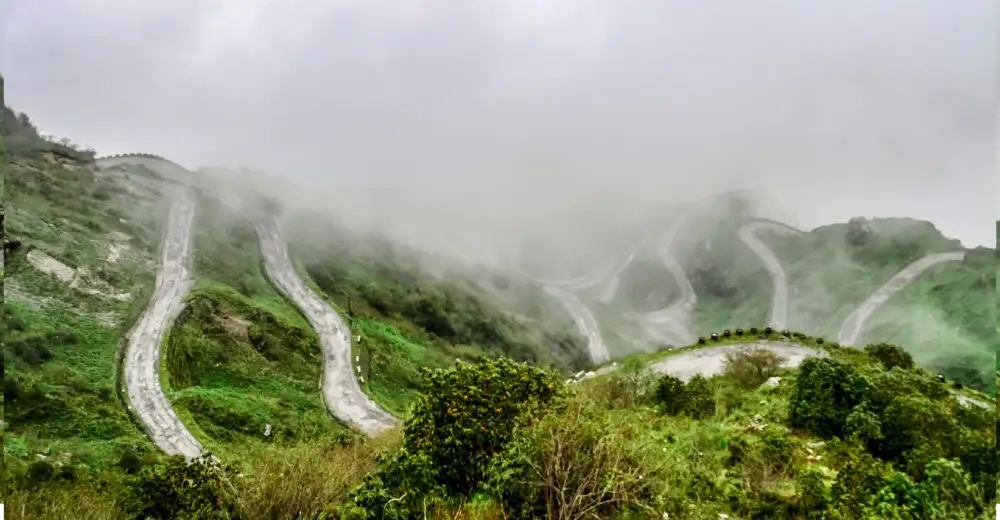
Driving through the iconic Zuluk loops is a thrill in itself—each turn revealing a different view of the valley, often blanketed in mist or shimmering under snow. On a clear day, the route opens up to spectacular panoramas of the Kanchenjunga range, especially from Thambi View Point, a sunrise spot that leaves most travelers awestruck.
What makes Zuluk even more special is its raw, untouched charm. Far from the tourist circuit, this village feels isolated in the best way possible. There are no luxury hotels here—only cozy, locally-run homestays where you can savor steaming thukpa and chat with army veterans who call this borderland home.
Zuluk is also a gateway to other hidden Silk Route wonders like Kupup Lake, Nathang Valley, and Tukla Valley. The area bursts into bloom in spring with wild primulas and rhododendrons, while winter transforms it into a snowy wonderland.
Zuluk falls under a protected border zone. Indian nationals need a Protected Area Permit (PAP), and foreign nationals are not permitted.
Planning to explore the lesser-known side of the Himalayas? Check out these customized Sikkim tour packages that include both popular spots and hidden gems tailored to your travel style.
If you’re a lover of roads less traveled, sweeping vistas, and a bit of high-altitude adventure, Zuluk promises a truly unforgettable Himalayan escape.
Sikkim most popular destination
4. Uttarey – Gateway to the Singalila Trek
Nestled in the far reaches of West Sikkim, close to the Indo-Nepal border, Uttarey is a peaceful mountain village often skipped in favor of nearby Pelling. But for those who take the turn toward this hidden valley, Uttarey offers an unmatched blend of natural beauty, trekking routes, and authentic village life.
Surrounded by dense forests and snow-capped peaks, Uttarey is the lesser-known gateway to the Singalila Range, making it a base for serious trekkers heading toward Dzongri, Goechala, or Phoktey Dara. But even if you’re not trekking far, short forest hikes here are magical—leading to waterfalls, hanging bridges, and panoramic hilltop viewpoints.
One of the most serene spots is the Mainebass Waterfall, a stunning multi-tiered cascade hidden deep in the woods. Close by is the quaint Kagyu Monastery, offering peaceful surroundings and breathtaking views of the valley below.
The village is home to Limbu, Rai, and Bhutia communities, and travelers are welcomed with warm hospitality in eco-homestays and rustic wooden cottages. Uttarey is also known for hosting the annual Tenzing Hillary Festival, which celebrates mountain culture and adventure.
Free from crowds and commercialization, Uttarey is ideal for slow travelers, birdwatchers, writers, and anyone craving a tranquil connection with nature and culture.
Travel Tip: Combine Uttarey with a trip to Kaluk or Rinchenpong for a complete offbeat experience in West Sikkim.
Want to skip the planning and just enjoy the beauty? Choose from handpicked Sikkim tour packages that cover both popular and unexplored gems.
5. Tarey Bhir – The Grand Cliff Walk of Sikkim
Located just a short drive from Namchi, in South Sikkim, Tarey Bhir is one of the most stunning yet surprisingly little-known natural landmarks in the region. The word “Bhir” means cliff in Nepali—and Tarey Bhir lives up to its name with a 3-kilometer-long ridge perched along a vertiginous drop of over 10,000 feet.
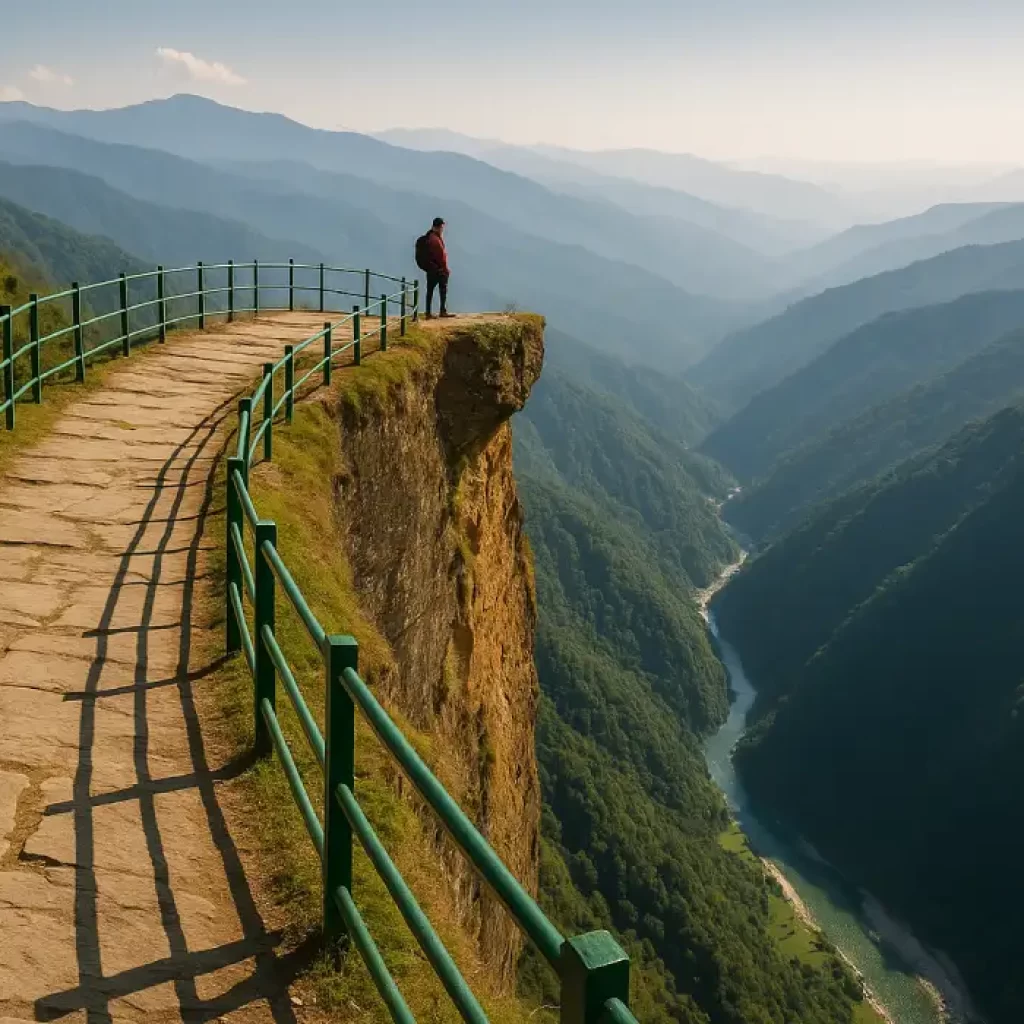
This cliffside path offers breathtaking views of the confluence of the Teesta and Rangeet rivers, as well as sweeping panoramas of the Bengal plains on one side and Himalayan ridges on the other. On a clear day, you can even spot Darjeeling’s hills and Kalimpong in the distance.
What makes Tarey Bhir special isn’t just the view, but the experience of walking along a narrow cliff edge, with cool mountain air and the sound of prayer flags rustling in the breeze. It’s ideal for sunrise or sunset, where golden light transforms the landscape into something ethereal.
Despite its grandeur, Tarey Bhir remains off the main tourist radar. There’s a well-paved walking path with safety railings, making it accessible to most travelers without strenuous hiking. It’s also close to Sadam and Samdruptse, so you can combine multiple lesser-known attractions in one peaceful itinerary.
Visit Breathtaking Hill Stations with TripHills – Book Your Journey Today!
6. Barsey Rhododendron Sanctuary – Floral Fantasy
Tucked into the Singalila Range of West Sikkim, the Barsey Rhododendron Sanctuary is a hidden paradise for nature lovers, trekkers, and photographers—especially during the blooming months of March to April, when the forest bursts into vibrant shades of pink, red, and purple.
Spread over 104 square kilometers, the sanctuary is home to more than 30 species of rhododendrons, along with rare Himalayan flora and fauna like the red panda, Himalayan black bear, and the colorful Himalayan monal. The air is rich with birdsong, and the trails are often blanketed in soft petals, giving the entire place a surreal, fairy-tale vibe.
The most popular trek is from Hilley to Barsey, an easy 4-km forest trail lined with blooming rhododendrons, mossy trees, and occasional viewpoints of the Kanchenjunga range. It’s a short but stunning hike suitable for beginners, families, and photographers alike.
There are also forest rest houses and homestays in Okhrey or Dentam, where you can experience local culture while enjoying warm hospitality and home-cooked meals.
Best Time to Visit: Late March to mid-April is peak bloom. The sanctuary remains closed during monsoon and harsh winter months.
For those who crave peaceful treks, floral landscapes, and a strong connection with untouched nature, Barsey offers a short escape that feels like stepping into another world.
7. Hee Bermiok – For Eco and Heritage Lovers
Tucked away in the hills of West Sikkim, Hee Bermiok is a quiet twin-village destination that seamlessly blends eco-tourism, cultural richness, and heritage trails. Located near Pelling but far removed from its tourist bustle, this lesser-known gem offers a perfect balance of scenic beauty and community-based travel.
The area is predominantly inhabited by Limbu, Bhutia, and Rai communities, each with their own unique traditions, architecture, and cuisine. Visitors are welcomed into authentic heritage homestays—beautiful wooden houses adorned with handwoven fabrics, prayer flags, and locally crafted tools. Staying here is not just about a place to sleep—it’s about living like a local.
Nature here is equally rewarding. You can hike through cardamom fields, take nature walks to hidden waterfalls, and trek up to Varsey Rhododendron Sanctuary, which is just a short drive away. The area is also known for its rich birdlife, making it ideal for birdwatchers and wildlife photographers.
One of the highlights is the annual Hee Bermiok Heritage & Tourism Festival, where travelers can enjoy traditional dances, ethnic food, archery competitions, and local storytelling sessions—all against a backdrop of snow-capped peaks and green valleys.
For those seeking slow travel with soul, Hee Bermiok offers a rare combination of sustainability, culture, and untouched Himalayan charm—the kind of place that changes the way you travel.
8. Thangu Valley – Precursor to Gurudongmar
Located at an altitude of over 13,000 feet, Thangu Valley is one of the last inhabited regions in North Sikkim before you ascend toward the famous Gurudongmar Lake. While most travelers pass through it quickly, few realize that Thangu itself is a destination worth pausing for—offering a surreal mix of snowfields, silence, and unfiltered Himalayan wilderness.
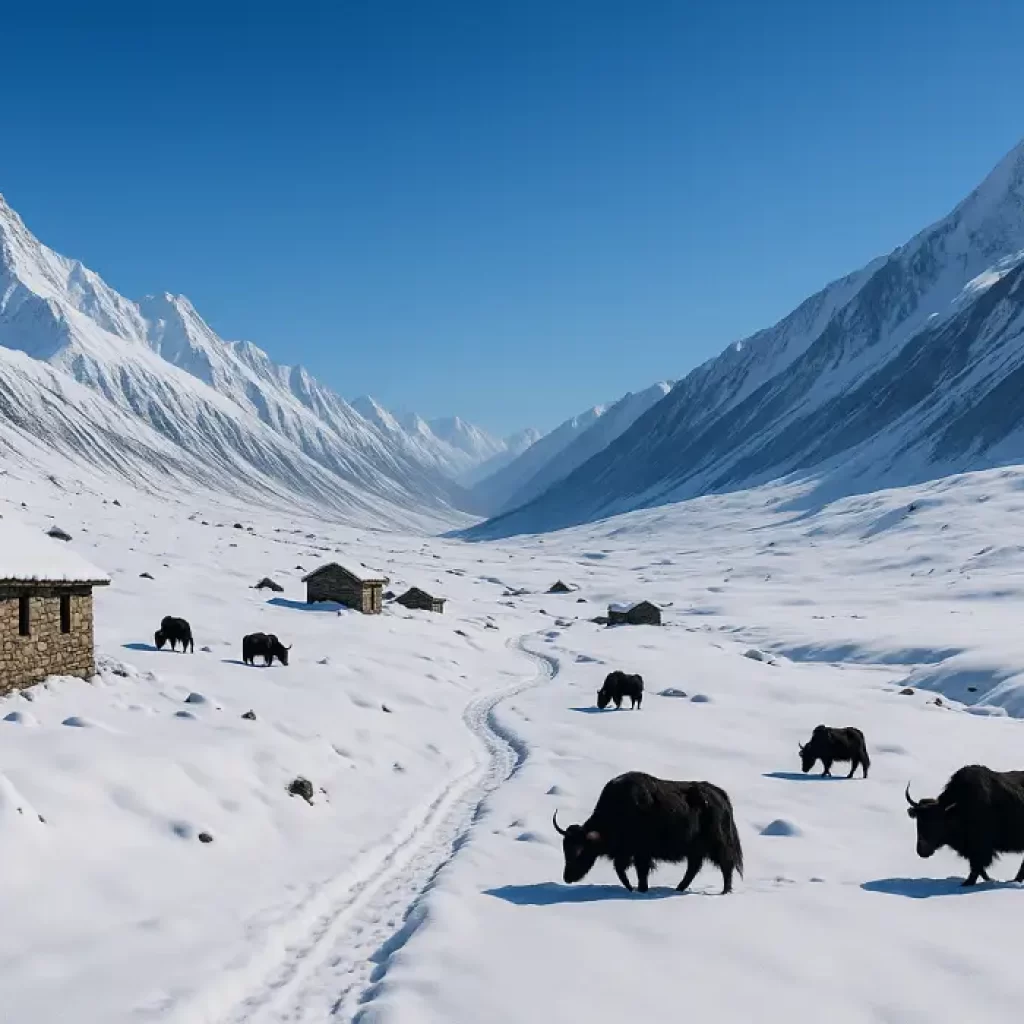
Surrounded by towering mountains and cut by the sparkling Teesta River, the valley transforms with the seasons. In summer, it’s a carpet of alpine flowers; in winter, it becomes a white wonderland where yaks graze through snow-draped meadows. The raw, wide-open landscape is unlike anywhere else in Sikkim—vast, rugged, and meditative.
Thangu is sparsely populated with just a few small hamlets and traditional wooden homes. While the amenities are basic, the hospitality of the local Lachenpas is heartwarming. Spend a night here in a rustic guesthouse and wake up to frosty mornings, crystal-clear skies, and silence so pure it humbles you.
It’s also a great spot to acclimatize before heading to higher-altitude destinations like Gurudongmar Lake or Kala Patthar, helping travelers avoid altitude sickness.
9. Rolep – River Valley Beauty You’ve Never Heard Of
Tucked deep in the Eastern part of Sikkim, Rolep is a serene riverside village that few travelers know about—but those who visit often call it one of Sikkim’s most peaceful and scenic getaways. Located near Rongli, Rolep sits along the Nomchu River, offering lush green hills, quiet trails, and a pace of life that’s refreshingly slow.
The highlight of Rolep is its raw natural beauty—dense forests, crystal-clear river streams, wooden bridges, and picturesque farmlands. You can take a lazy walk to the Hanging Bridge, go trout fishing in the Nomchu, or simply sit by the river with a book and lose track of time. The valley is also dotted with traditional houses and homestays where you can interact with local Rai and Bhutia families.
For those who enjoy short treks, the Tarey Bhir cliff walk is accessible within a day’s drive, and birdwatching around Rolep is especially rewarding during the spring months.
Rolep is perfect for travelers looking to escape the crowds of Gangtok or Tsomgo Lake. With its growing popularity among eco-tourism circuits, the village still maintains its offbeat charm—offering quiet comfort instead of curated experiences.
Best Time to Visit: October to April for clear skies and cool weather; monsoons are lush but bring leeches and slippery trails.
If you’re seeking an intimate encounter with nature—free from noise, commercial tourism, and chaos—Rolep is one of Sikkim’s last untouched sanctuaries.
Tips for Visiting Offbeat Sikkim
Exploring the hidden corners of Sikkim is incredibly rewarding—but it also comes with a few unique challenges. From restricted zones to unpredictable weather, here are essential tips to help you travel safely and respectfully through the lesser-known gems of Sikkim.
1. Check Permit Requirements
Many offbeat destinations like Dzongu, Zuluk, and Thangu fall under Protected or Restricted Areas. Indian citizens need an Inner Line Permit (ILP) or Protected Area Permit (PAP) for entry. Foreigners are allowed in limited areas and may need additional approvals. Always apply in advance via tour operators or government portals.
2. Hire Local Guides
Maps can be misleading in Sikkim’s high-altitude regions. Local guides know the terrain, culture, and regulations well. Hiring them not only ensures your safety but also supports the local economy.
3. Acclimatize Gradually
Areas like Thangu, Zuluk, and Gurudongmar lie above 10,000 feet. Sudden exposure to high altitudes can cause Acute Mountain Sickness (AMS). Spend a day or two in lower regions like Lachen or Rolep to acclimatize properly.
4. Carry Cash & Power Banks
ATMs are rare or unreliable in remote regions, and many homestays only accept cash. Internet and electricity outages are also common—especially in winter—so pack a power bank and offline maps.
5. Travel Responsibly
Offbeat Sikkim is ecologically sensitive. Avoid plastic, don’t litter trails, and respect sacred sites. Ask before photographing people, especially in tribal or monastic areas.
| Location | Permit Type | Who Can Visit? |
|---|---|---|
| Dzongu Valley | Inner Line Permit (ILP) | Indian nationals only |
| Zuluk (Silk Route) | Protected Area Permit (PAP) | Indian nationals only |
| Thangu Valley | Protected Area Permit (PAP) | Indian nationals only |
Journey Beyond the Usual
Sikkim is often portrayed through images of Gangtok, Nathula, and Tsomgo Lake—but the true magic of this Himalayan state lies in its hidden corners. From the sacred stillness of Dzongu to the cliffside trails of Tarey Bhir, these lesser-known places offer more than beauty—they offer connection, silence, and stories that stay with you long after the trip ends.
What makes these hidden gems special isn’t just that they’re untouched—it’s that they invite you to travel slower, deeper, and more meaningfully. Whether you’re walking with monks in Yuksom, hiking through rhododendron forests in Barsey, or sipping millet beer in Hee Bermiok, you’ll experience Sikkim in its most authentic, soulful form.
So if you’re done with over-touristed itineraries and cookie-cutter trips, pack your bags for these offbeat locations. Let the mountains rewrite your idea of travel.

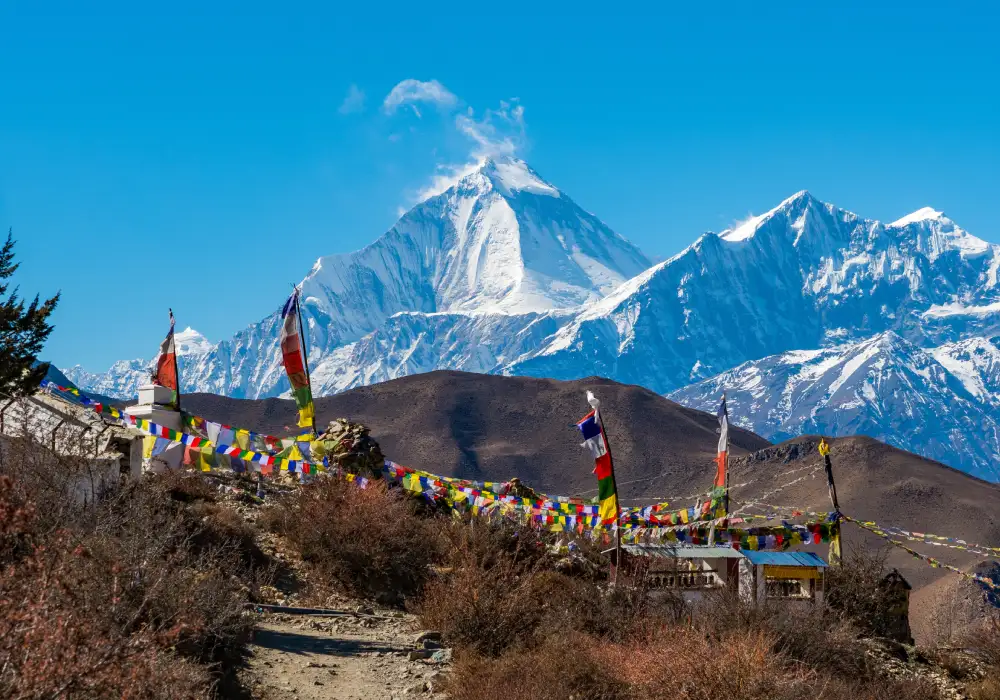
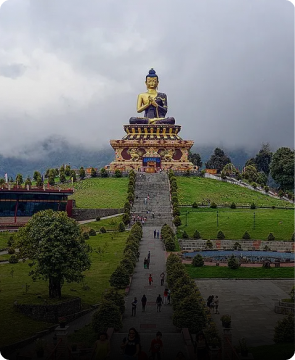
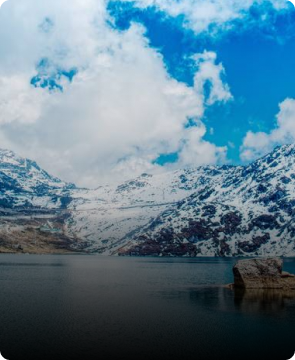
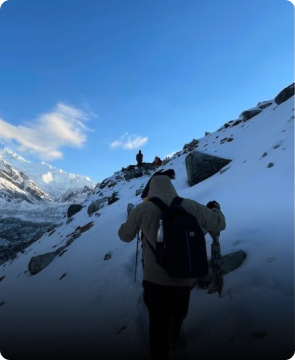

0 Comment